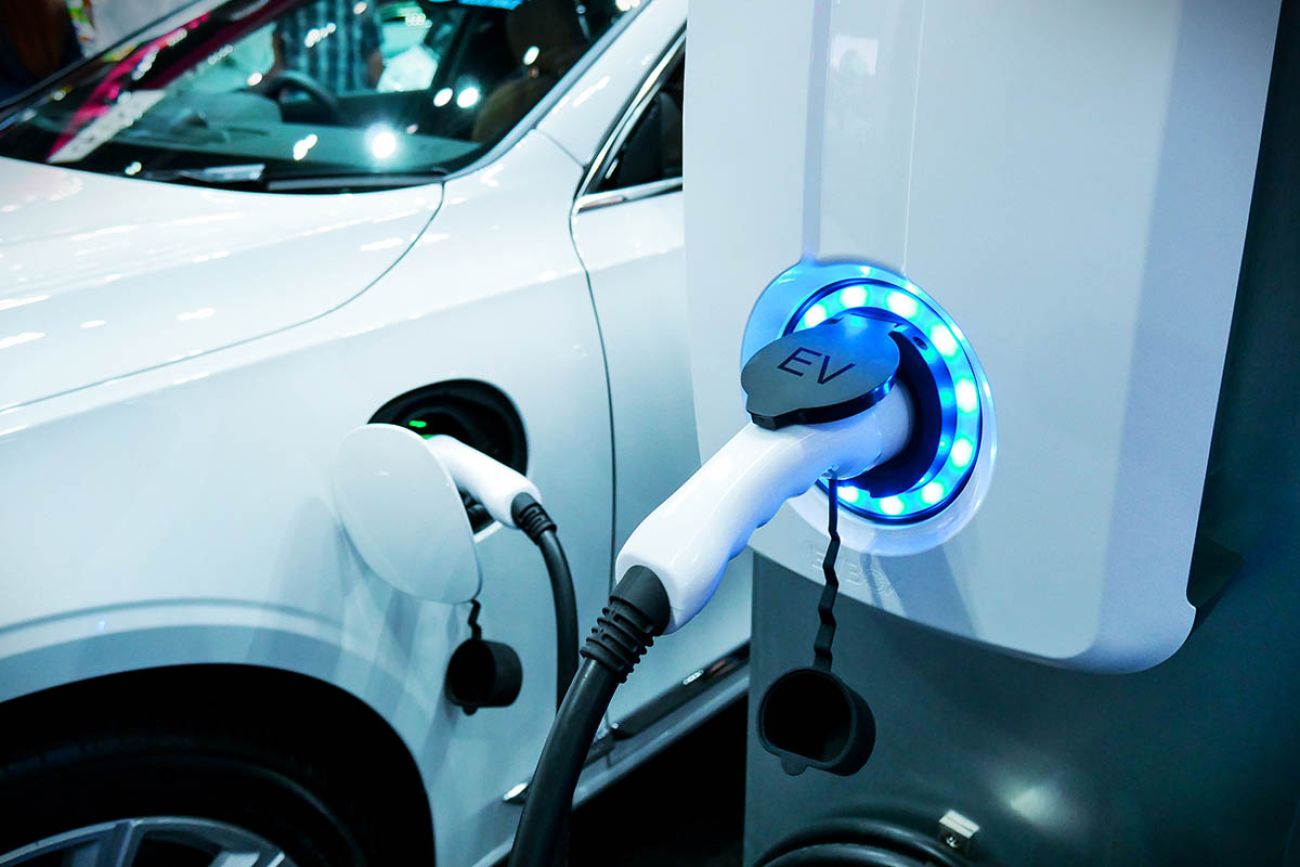Michigan automakers get breathing room on EVs. Bigger political battle looms

- Michigan’s automakers gained some time to meet aggressive new emissions guidelines set
- Electric vehicle sales are growing slower than projected, but the push is on to cut greenhouse gas emissions
- The transition to EVs is hugely political and is a key issue in a likely rematch between Biden and Trump
Michigan automakers scored some concessions Wednesday, when the Biden administration finalized landmark emission rules that attempt to transform the auto industry to mostly electric or hybrid vehicles by 2032.
The rules from the U.S. Environmental Protection Agency preserve its goal of drastically reducing greenhouse gas emissions, but heed the urging of the auto industry by easing some compliance targets from 2027 to 2030.
The move remains both ambitious and challenging, while the adjusted timeline also reflects “the realities of the EV transition,” Dearborn-based Ford Motor Co. said in a statement.
Related:
- Auto experts: Competition, politics, fading subsidies could affect Michigan EV sales
- As automakers win incentives for EV plants, Michigan pays for polluted past
- Michigan boosts funding to attract new EV-related factories
EV sales grew in 2023, but accounted for less than 1 in 10 U.S. car sales. While automakers are investing billions of dollars to shift production, many signature projects — including in Michigan — are in limbo as EV sales plateau and consumers are in no hurry to ditch gas-powered cars.
Environmental and manufacturing groups both claimed victory on Wednesday, saying the regulations can stem pollution but also give automakers more time to adopt.
But the rules no doubt will exacerbate what has already become a hugely political issue, especially in Michigan, a key swing state in an anticipated rematch between President Joe Biden and former President Donald Trump.
Trump lost to Biden in Michigan by fewer than 160,000 votes in 2020 and is aggressively courting autoworkers anxious about the switch to electric vehicles, calling it a “transition to hell” last year in Michigan.
Underscoring the point, U.S. Rep. Tim Wahlberg, R-Tipton, on Wednesday decried the new regulations as “devastating news for Michigan, the auto industry, and American families.”
Here’s what you need to know about the issue:
What the EPA said
The requirements set on Wednesday lay out a formula for what is acceptable for tailpipe emissions among automakers’ full sales by year through 2032.
Originally, about 60% of new vehicles would have had to be electric in 2030. With the new rules, that percentage would be from 31% to 41%, the Wall Street Journal reported.
The reduction means automakers could reach compliance with a bigger combination of gas-electric hybrids and gas- or diesel-powered vehicles.
Even with the concessions, the new rules will dramatically reduce pollutants, the EPA said. By 2032, emissions from cars and light trucks will need to be cut by nearly 50% compared to the 2026 model year.
The change also will reduce fine particulate matter from gasoline-powered vehicles by over 95%, which the EPA said will dramatically improve air quality.
The market
Electric vehicle sales were once forecast to hit 50% of the market by 2030, projections that prompted General Motors in 2021 to optimistically plan to be all-electric by 2035.
While 1.2 million electric vehicles were sold last year, that is far from the trajectory that many initially projected. General Motors and Ford have slowed EV production and are investing more in hybrids, which make up about 16% of total sales.
In recent years, Ford has downsized the scope of its proposed EV battery factory in Marshall, while GM has slowed its plan to shift to new EV production at its Lake Orion Assembly plant.
Slowing the ramp-up time for the stricter emission rules is good news for automakers and their suppliers, Mike Wall, executive director of automotive analysis for S&P Global Mobility, told Bridge Michigan.
The move gives them some certainty over the changing regulations that would have started in 2027, he said. Companies already are preparing for those rules because “they’re not very far down the road” for automakers’ production planning, Wall said.
The changes will let consumers catch up, overcome anxieties about EVs and prices to fall, he added.
U.S. auto sales are on track to hit about 16 million units in 2024, a slight increase over 2023, Wall said. This year, EVs are expected to grow to 10% of sales.
However, that growth depends on two key factors: price and charger availability, Wall said. In 2022, the average price of an EV was about $61,000, compared to $50,000 for all passenger cars and trucks.
“There’s still a tall task ahead for the industry,” Wall said. “There’s still a bit of a reckoning that the industry is going to have to go through.”
U.S. Rep. Debbie Dingell, D-Ann Arbor, said EV prices have fallen 20% over the past year, while the number of models have doubled in three years. Another 103 EV models will be introduced in the U.S. market from this year through 2027, Wall said.
The auto industry reacts
Both the United Auto Workers and auto industry representatives expressed confidence in the regulations and praised the EPA rules.
“Automakers are committed to this transformation,” said John Bozzela of the Alliance for Automotive Innovation in Washington, D.C., which represents the largest U.S. manufacturers.
But they also questioned how quickly they could reach the goals, he said Wednesday during an EPA presentation from Washington, as they “invest enormous amounts of capital” and still rely on gas-fueled vehicles for profits.
“The right pace for something this consequential and transformative … gives us a chance to secure the manufacturing and industrial base needed for long-term success,” Bozzella said.
Michigan-based Stellantis NA called the regulations “aggressive,” but joined Ford in expressing relief at the extra time. The United Auto Workers, called the new regulations “feasible” and reject the “fearmongering that says tackling the climate crisis must come at the cost of union jobs.”
“This rule does not require Ford, General Motors, Stellantis or any other domestic automaker to do anything beyond the commitments they’ve made to shareholders to capitalize on the growing EV market,” the UAW said.
Political implications
The decision will likely have vast political implications. Environmentalists who tend to favor Democrats supported the emission standards, while conservatives and Republicans decried it.
“Transportation is the No. 1 source of climate pollution, which is why this much needed rule puts us on a path towards a cleaner future,” said Bentley Johnson, federal government affairs director for the Michigan League of Conservation Voters.
The standards represent “another historic step forward in cleaning up the country’s transportation sector,” said Deirdre Nieves, director of climate justice and solutions for the West Michigan Environmental Action Council.
The American Fuel & Petrochemical Manufacturers and the American Petroleum Institute announced they are prepared to sue over the new rules.
“This wildly unpopular policy is going to feel and function like a ban,” the business groups said in a joint statement.
The EPA’s announcement said the change will result in $62 billion in reduced annual fuel costs for consumers.
As much as President Joe Biden and the EPA “claim to have ‘eased’ their approach, nothing could be further from the truth. This regulation will make new gas-powered vehicles unavailable or prohibitively expensive for most Americans,” read the shared statement from the American Fuel & Petrochemical Manufacturers and the American Petroleum Institute.
Wahlberg, the Michigan U.S. representative, said the “rule restricts the choices of American consumers and will price millions out of the market, and eliminate American jobs.”
If elected in November, Trump has said he will rescind new emission rules, as he did in 2020 when he rolled back standards adopted by his Democratic predecessor, Barack Obama.
Business Watch
Covering the intersection of business and policy, and informing Michigan employers and workers on the long road back from coronavirus.
- About Business Watch
- Subscribe
- Share tips and questions with Bridge Business Editor Paula Gardner
Thanks to our Business Watch sponsors.
Support Bridge's nonprofit civic journalism. Donate today.
See what new members are saying about why they donated to Bridge Michigan:
- “In order for this information to be accurate and unbiased it must be underwritten by its readers, not by special interests.” - Larry S.
- “Not many other media sources report on the topics Bridge does.” - Susan B.
- “Your journalism is outstanding and rare these days.” - Mark S.
If you want to ensure the future of nonpartisan, nonprofit Michigan journalism, please become a member today. You, too, will be asked why you donated and maybe we'll feature your quote next time!




